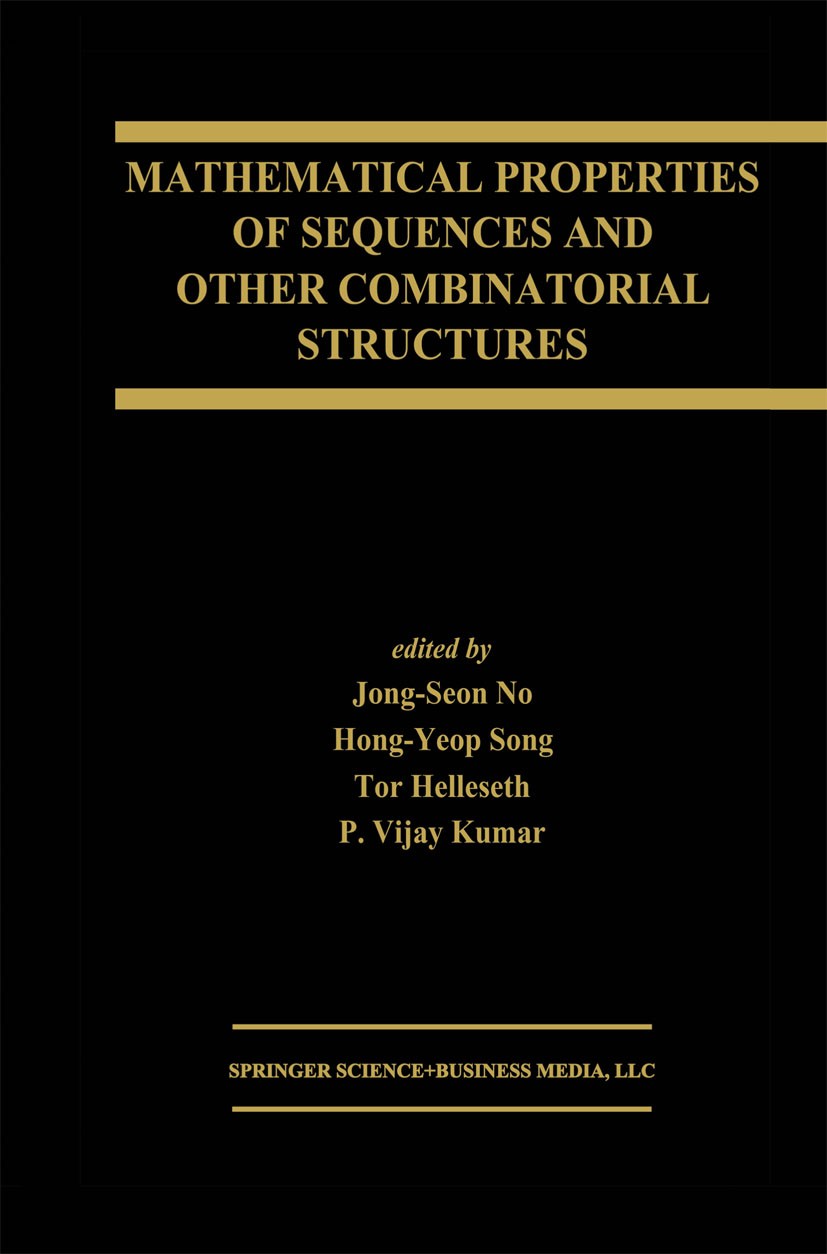| 书目名称 | Mathematical Properties of Sequences and Other Combinatorial Structures |
| 编辑 | Jong-Seon No,Hong-Yeop Song,P. Vijay Kumar |
| 视频video | http://file.papertrans.cn/627/626560/626560.mp4 |
| 丛书名称 | The Springer International Series in Engineering and Computer Science |
| 图书封面 |  |
| 描述 | .Mathematical Properties of Sequences and Other Combinatorial Structures. is an excellent reference for both professional and academic researchers working in telecommunications, cryptography, signal processing, discrete mathematics, and information theory. ..The work represents a collection of contributions from leading experts in the field. Contributors have individually and collectively dedicated their work as a tribute to the outstanding work of Solomon W. Golomb. ..Mathematical Properties of Sequences and Other Combinatorial Structures. covers the latest advances in the widely used and rapidly developing field of information and communication technology.. |
| 出版日期 | Book 2003 |
| 关键词 | Overlay; Performance; Standard; communication; information; information theory; integrated circuit; number |
| 版次 | 1 |
| doi | https://doi.org/10.1007/978-1-4615-0304-0 |
| isbn_softcover | 978-1-4613-5013-2 |
| isbn_ebook | 978-1-4615-0304-0Series ISSN 0893-3405 |
| issn_series | 0893-3405 |
| copyright | Springer Science+Business Media New York 2003 |
 |Archiver|手机版|小黑屋|
派博传思国际
( 京公网安备110108008328)
GMT+8, 2025-11-15 18:51
|Archiver|手机版|小黑屋|
派博传思国际
( 京公网安备110108008328)
GMT+8, 2025-11-15 18:51


